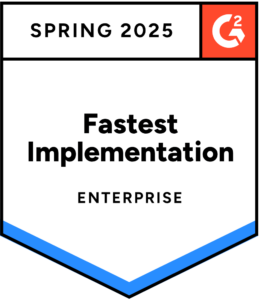Transaction Matching Guide
Blog post
Share
Manual transaction matching can feel like putting together a puzzle where you KNOW a bunch of pieces are missing, particularly when you know you may be dealing with tens of thousands, even hundreds of thousands, of transactions in a particular period. Missed, misposted, or otherwise mishandled transactions can delay EOM closing, cause compliance headaches, and erode stakeholder confidence in your operations.
This is exactly why fast, efficient, and accurate transaction matching is crucial. In this guide, we’re going to get down to the basics to understand what transaction matching actually is and the specific challenges that finance teams can face. You’ll learn how automated transaction matching can solve them in minutes, and why Trintech’s solution is leading the industry with innovation and accuracy at scale.
What is Transaction Matching?
Transaction matching is the orderly, even systematic, comparison of multiple data sources to confirm that each event is recorded accurately on each system. This typically includes bank statements, accounts receivable sub-ledgers, and more.
A “match” is typically achieved when predefined attributes all align close enough to be considered within tolerances. In most cases, the major attributions include date, time, amount and reference number. Unmatched items become exceptions that are flagged for further manual investigation before the account can be certified.
Unlike broader account reconciliation methods, which might examine balances at a higher, summary level, transaction matching operates at a line-item detail level. This means it removes one of the major causes of balance differences instead of masking them with journals.
Why is Transaction Matching Important?
Transaction matching is a vital part of the financial close process which facilitates detecting errors, missing data, and potential fraud well before the month-end reports are finalized. Without this systematic matching process, misposted or unrecorded entries have the potential to cause misstated balances.
Automated matching helps accelerate the closing cycle, freeing up teams from manual checks and empowering them to investigate exceptions. Automated matching can cut time spent on matching transactions by as much as 80%.In more high-volume environments like larger enterprises or financial institutions, effective and accurate matching is a critical part of maintaining quality control, meeting regulatory requirements and deadlines, and giving clients and stakeholders the confidence of accurate and timely financials.
What are the Challenges of Manual Transaction Matching?
The days of spreadsheet reliance and human-powered month-end reconciliation are long gone. The entire process is slow and invites mistakes at every stage. Manual matching struggles to scale for volume during the odd, heavy month, bottlenecking potential growth when it’s needed the most.
Inconsistencies with rules applied by humans, like subjective date tolerances, rounding errors and more, can all require constant adjustments and reworks. Differences in date formats can exacerbate this issue from one platform or system to another if data needs to be transformed.
As this transaction volume and complexity grow, implementing partial payments, chargebacks or intercompany transfers can lead spreadsheets to their practical limits, making manual investigation unsustainable.
How Does Automated Transaction Matching Work?
The process is more detailed than you may realize, but it can be broken down into a few key steps.
First, the system imports all of the needed data and transaction files from various sources, like ERP ledgers, credit card feeds, bank statements and so on, normalizing the data as it goes. Next, matching rules are applied to that data, matching easy pairs based on dates, amounts, or reference values.
However, when there are exceptions that don’t meet the criteria and cannot be matched, they are flagged for manual review. This can be incredibly complex and require substantial human research and review before finding matching data from fragmented systems.
With advanced automated transaction matching, far more complex matches can be obtained without human intervention, freeing up finance professionals to focus on investigating exceptions rather than manual data entry
What are the Benefits of Automated Transaction Matching?
- Scalability: Automation completes matching in minutes, not days, shrinking the financial close cycle.
- Efficiency gains: Algorithm‑driven rules reduce human error and catch discrepancies that manual review may miss.
- Improved accuracy: High‑volume matching handles thousands of transactions without added headcount.
- Audit readiness: Detailed audit trails document every match and exception, simplifying regulatory compliance reviews.
What are the Types of Transaction Matching?
1-to-1 Matching
1-to-1 matching is typically the easiest and matches a transaction in one system with an entry in another. One example would be matching a loan payment to a ledger entry for that payment.
1-to-Many Matching
In 1-to-many matching, a single translation in one system will have multiple entries in other systems. This could be a large payment applied across multiple invoices, such as in a payment plan.
Many-to-1 Matching
Many-to-1 matches are going to match multiple smaller transactions in aggregate to a single larger entry in another system. These matches are typical when reconciling cash receipts.
Many-to-Many Matching
Many-to-many matching is without a doubt the most complex matching and often reflects netting intercompany transfers against multiple invoices and payments.
What are Common Use Cases for Transaction Matching?
- Bank Reconciliation: Financial institutions use it for automatically pairing daily bank statement lines with ledger entries to close books quicker.
- Credit Card Reconciliation: Matching can help align card processor fees with expense records, quickly identifying fraudulent or duplicate charges.
- Intercompany Reconciliation: Easily match transactions spanning legal entities to simplify consolidation and reduce imbalances.
- AP/AR Matching: Reconcile customer payments with vendor invoices to keep receivables and payables reporting accurate.
How Has Transaction Matching Software Helped Other Teams?
It might be challenging to get a clear idea of what automated transaction matching software can do for your team. Here are a few scenarios where transaction matching has substantially improved month-end operations.
- Ruby Slipper Cafe: After moving off Excel, the café’s finance team now runs daily automated matches on bank, A/R, gift card, and corporate card transactions
- CNG Holdings: Before Trintech, CNG processed around one million transactions per month in Excel, leading to errors and delays. After implementing Trintech with The Recon Group’s support, they moved reconciliation into a database, automated 1‑to‑many and many‑to‑1 matches, and slashed exception rates.
- H&R Block: Scaling from seasonal peaks, they processed 10x transaction volumes without adding headcount, ensuring timely tax‑season closes.
How to Get Started with Transaction Matching Tools?
Start off by mapping all of your data sources, like bank feeds, ERP systems, and credit card transaction files. Once these sources are mapped to your matching platform, you’ll define the basic rules that will dictate matches, then pilot the operation with a small subset of data or accounts.
As you see patterns emerge, review and refine your exception rules. Train your team on the dashboard workflows that dictate investigation of flagged entries, and as confidence grows, expand the rule complexity to cover more 1‑to‑many and many‑to‑many scenarios.
Finally, integrate the matching processes into your month-end closing checklist to maintain consistency and continuous improvement.
How Trintech Helps with Transaction Matching
Trintech’s automated solution handles massive transaction volume and complex matches that far outpace any other transaction matching tools on the market, most which can only handle 1-to-1 matching. With support for 1‑to‑1, 1‑to‑many, many‑to‑1, and many‑to‑many rules natively, manual interventions can be all but phased out.
Advanced workflows and AI-powered matching suggestions can help reduce investigation time even more. With end-to-end audit trials and real-time dashboards, finance teams can get far more visibility into and control over the entire close process.






